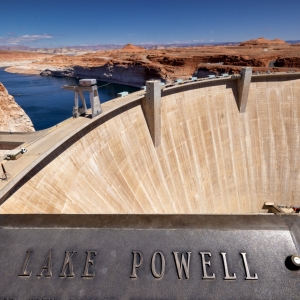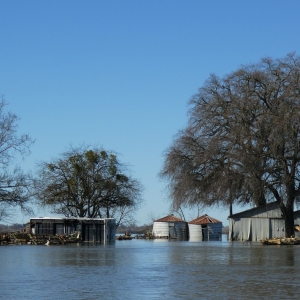This week’s episode of What’s Up With Water covers an unusually warm month in France, famine in Somalia, and withering wheat crops in Iraq.
Transcript
Welcome to “What’s Up With Water” – your need-to-know news of the world’s water from Circle of Blue. I’m Eileen Wray-McCann.
In France, May was unusually warm, and that could limit operations at some of its nuclear power facilities. Most inland facilities cool their power-generating equipment with river water. But when river temperatures climb too high, the water is too warm for cooling purposes and the waste heat expelled by the facility endangers fish and other aquatic life. According to Reuters, four plants in southern France are currently at the highest risk of being shut down by temperature restrictions. This is not a new problem. In recent years, several heat waves in France have affected nuclear power generation, forcing plants to cut back or shut down.
In Somalia, the risk of famine is growing as a severe drought shows no sign of abating. The United Nations’ top humanitarian official for the Horn of Africa toured a displaced persons camp last week to observe the struggles. Somalia is in the midst of a fourth consecutive failed rainy season. In a country where many people live on the food they grow themselves, the crop failures translate into hunger. The UN estimates that 1.4 million children face acute malnutrition this year. As many as 7 million people could be affected by the drought, either through hunger, loss of livelihood, or displacement. The risk of famine is intensified by rising global food prices. The price spike for wheat, corn, and other staples is largely a result of disruptions in global food markets following Russia’s invasion of Ukraine.
As the global price for wheat skyrockets, farmers in Iraq tell the Associated Press that they don’t have enough water to grow their crops. Last year, the country’s Agriculture Ministry decided to cut irrigation water allocations by half. The decision was fueled by severe water shortages and over-extraction of the Tigris and Euphrates rivers by neighboring countries. Most of Iraq’s surface water comes from those two basins. Without sufficient water, crops are suffering. The wheat harvest in 2020 was just over 6 million tons. In 2021, it fell about 35% to just over 4 million tons. This year, the Agriculture Ministry expects the wheat harvest to be no more than 2.5 million tons, another staggering drop in productivity. Water shortages in Iraq are not only affecting farmers. The country is extremely dry, and desert winds have stirred ferocious dust storms. Over the last six months, a series of storms has sent tens of thousands of Iraqis to hospitals with respiratory problems. The winds are a seasonal event. But combined with dry conditions and declining vegetation, they have struck with unusual force this year.
And that’s “What’s Up With Water” from Circle of Blue, where water speaks. More water news and analysis await you at circleofblue.org. This is Eileen Wray-McCann – thanks for being here.
Eileen Wray-McCann is a writer, director and narrator who co-founded Circle of Blue. During her 13 years at Interlochen Public Radio, a National Public Radio affiliate in Northern Michigan, Eileen produced and hosted regional and national programming. She’s won Telly Awards for her scriptwriting and documentary work, and her work with Circle of Blue follows many years of independent multimedia journalistic projects and a life-long love of the Great Lakes. She holds a BA and MA radio and television from the University of Detroit. Eileen is currently moonlighting as an audio archivist and enjoys traveling through time via sound.






